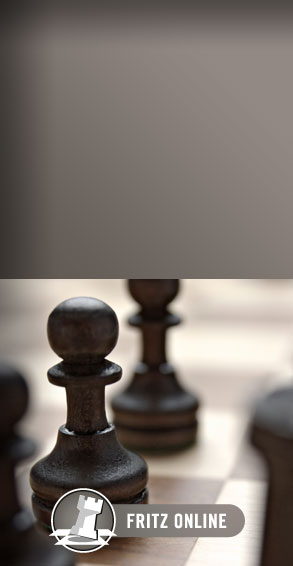Chess Explorations (72)
By Edward Winter

C.N. 5007 showed this water-colour painting, courtesy of its owner Eric Fisher
(Hull, England). The artist was Samuel Standidge Boden (1826-1882), whose obituary
on pages 167-168 of the Chess Monthly, February 1882 referred to him
as a landscape painter and art critic, also describing him as ‘one of the best
chessplayers England ever produced’. Page 31 of the Chess Player’s Chronicle,
18 January 1882 stated that ‘on coming into some property, through the death
of a relative, he entirely devoted himself to art’.
This sketch of Boden comes from page 553 of Brentano’s Chess Monthly,
March 1882:

Boden’s most famous chess game is a 15-move brilliancy which
was discussed in a number of items (C.N.s 292, 378, 428, 474, 531 and 578) in 1983.
Here, we offer an expanded overview of the game which gave rise to the term
‘Boden’s Mate’:
1 e4 e5 2 Nf3 d6 3 c3 f5 4 Bc4 Nf6 5 d4 fxe4 6 dxe5 exf3 7 exf6 Qxf6 8 gxf3
Nc6 9 f4 Bd7 10 Be3 O-O-O 11 Nd2 Re8 12 Qf3 Bf5 13 O-O-O d5 14 Bxd5 Qxc3+ 15
bxc3 Ba3 mate.

C.N. 292 pointed out the dismayingly similar entries on ‘Boden’s Mate’ in two
reference books. Firstly, page 35 of The Encyclopaedia of Chess by Anne
Sunnucks (London, 1970) and page 54 of the 1976 edition:

From page 40 of An illustrated Dictionary of Chess by Edward R. Brace
(London, 1977):

‘London, 1860’ was also specified by Walter Korn on page 50 of Chess Review,
February 1961. See too, for example, pages 157-158 of The Joys of Chess
by F. Reinfeld (New York, 1961). The game was ‘played about 1851’ according to page 16 of Chess Sparks by J.H.
Ellis (London, 1895). L’art de faire mat (English edition: The Art
of the Checkmate) by G. Renaud and V. Kahn presented the position (as Exercise
No. 21) as played around 1853 (‘vers 1853’), stating that White was ‘Schulten’. That surname was also used on page 128 of Ajedrez esencial by A. López
Manzano and J. Monedero González (Barcelona, 2002), which, moreover, put ‘London, 1844’.
An approximate year, 1865, was given on page 200 of 500 Master Games of Chess by S.
Tartakower and J. du Mont (London, 1952), whose index offered an initial for White:
R. Schulder. (It also had ‘A. Boden’.) The index to 200 Miniature Games of
Chess by J. du Mont (London, 1941) gave Schulder’s forename as Richard (possibly
through confusion with a later player of that name). Schulder was described
as ‘a strong German amateur’ when his loss to Boden was printed on page 173
of the 15 August 1884 Brooklyn Chess Chronicle. At present, we would
venture to affirm nothing about him beyond the surname Schulder.
Page 76 of The Art of Attack in Chess by V. Vuković (Oxford, 1965)
gave the position before 14...Qxc3+ (minus the black rook on e8), stating that
it came ‘from the game Macdonell [sic]-Boden (1869)’. That was amended
to ‘Schulder-Boden, London, 1853’ on page 76 of the algebraic edition edited
by John Nunn (London, 1998). Vuković’s reference to MacDonnell v Boden
was evidently based on confusion with another familiar brilliancy by Boden (20...Qxf3)
which was also given in the Tartakower/du Mont book (see pages 248-249). Unsurprisingly,
there are discrepancies regarding that game too. For instance, page 31 of Combination
in Chess by G. Négyesy and J. Hegyi (Budapest, 1965) dated it 1830, the
year in which MacDonnell was born.
Both Boden games were given in the 25 January 1882 issue of the Chess Player’s
Chronicle (pages 40-41), which said that the Schulder brevity was ‘played soon
after 1851’. The two games also appeared on pages 62-63 of H.E. Bird’s Chess
Masterpieces (London, 1875). Bird’s note to 8 gxf3 in Schulder v Boden was:
‘Some players consider changing queens detracts somewhat from the interest
of the game. Mr Schulder we happen to know was one of them.’
Bird gave no date for the game, but publication can be traced back to two British
periodicals in or around 1853. From page 253 of the third volume (1852-53) of
the Chess Player:

Below is the game-score as it appeared on page 58 of the British Chess Review,
1853:

From the bound volumes of the two magazines the publication dates of individual
issues are seldom clear. Neither periodical specified that the game was played
in 1853 (or, indeed, that the venue was London, as is commonly assumed). The
question which therefore arises is whether the game-score can be found in any newspaper or magazine columns of the early 1850s.
The Chess Player contained a number of other games by Schulder. Below,
from pages 65-66 of the 1852-53 volume, is a victory over Boden:
Schulder – Samuel Standidge Boden
Occasion?
Philidor’s Defence
1 e4 e5 2 Nf3 d6 3 Bc4 Be7 4 d4 exd4 5 Nxd4 Nf6 6 Nc3 O-O 7 O-O Nxe4 8 Nxe4
d5 9 Bxd5 Qxd5 10 Ng3 Nc6 11 Nxc6 Qxc6 12 c3 b6 13 f3 f5 14 Bf4 Ba6 15 Re1 Rad8
16 Qc2 Bd3 17 Qb3+ Bc4 18 Qc2 Bc5+ 19 Kh1 Kh8 20 Rad1 Rxd1 21 Rxd1 Be6 22 b3
h6 23 c4 Be7 24 Be5 Kh7

25 Ne2 Bc8 26 Nf4 g6 27 Qb2 Qc5 28 a3 c6 29 h4 g5 30 Nd3 Qe3 31 Qc2 Rd8 32
Bb2 gxh4 33 Re1 Qxd3 34 Rxe7+ Kg6 35 Qf2 Kh5 36 Bf6 Rg8 37 Qxh4+ Kg6 38 Be5
Resigns.
Further games played by Schulder will be given in a future C.N. item. There will also be more about the MacDonnell v Boden game, and we shall be dipping a wary toe into another casse-tête: the Horwitz v Popert
position mentioned above in the Sunnucks and Brace entries on Boden’s Mate.
Submit information
or suggestions on chess explorations
All ChessBase articles
by Edward Winter

Edward Winter is the editor of Chess
Notes, which was founded in January 1982 as "a forum for aficionados
to discuss all matters relating to the Royal Pastime". Since then, over 7,300
items have been published, and the series has resulted in four books by Winter:
Chess
Explorations (1996), Kings,
Commoners and Knaves (1999), A
Chess Omnibus (2003) and Chess
Facts and Fables (2006). He is also the author of a monograph on Capablanca
(1989). In 2011 a paperback
edition was issued.
Chess Notes is well known for its historical research, and anyone browsing
in its archives
will find a wealth of unknown games, accounts of historical mysteries, quotes
and quips, and other material of every kind imaginable. Correspondents from
around the world contribute items, and they include not only "ordinary readers"
but also some eminent historians – and, indeed, some eminent masters. Chess
Notes is located at the Chess
History Center. Signed copies of Edward Winter's publications are
currently available.
































